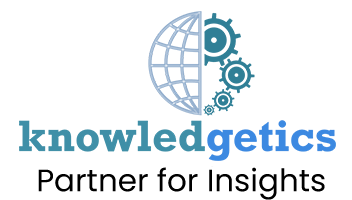Creating inclusivity for neurodiverse workforce begins with encouraging a culture of acceptance and adaptability. An often under looked concept, Neurodiversity refers to people with differences in their brain function and behavioral traits as part of a normal variation of the human population. It is the biological reality of infinite variation in human neurocognitive functioning and behavior. Much like biodiversity is essential to the natural world, neurodiversity recognizes that variations in human neurology are a natural and integral part of our species. This includes a range of conditions such as autism, ADHD, dyslexia, and more. However, the neurodiversity paradigm challenge continues when it comes to real action under diversity and inclusion programs of the corporate world.
Neurodiverse talent pool has been tagged to have competitive advantage in the field of STEM to organizations by many researchers. Many other research reports emphasizes that some conditions which are a part of autism and dyslexia have default benefits like strong memory and high pattern recognition ability. The hiring advantages of Neurodiverse talent can be categorized as:
- Broader Cognitive Strengths – Access to diverse thinking styles and problem-solving approaches.
- Exceptional Skills – Strong attention to detail, pattern recognition, creativity and innovation.
- Productivity & Quality Gains – Inclusive practices turn individual strengths into higher output and fewer errors.
- Team Resilience & Culture – Builds empathy, adaptability and collaboration within teams.
- Employer Brand Advantage – Enhances reputation as an inclusive, forward-thinking organisation and attracts top talent.
Despite growing evidence of the value neurodivergent employees bring, much of the corporate world remains slow to embrace this talent pool. Broader estimates suggest 15 - 20% of the global population may be neurodivergent, yet two-thirds are un- or under-employed. In the UK, only 31% of autistic adults are employed, despite studies showing inclusion can boost productivity by ~30% and significantly benefit the economy. Outdated recruitment practices, rigid role definitions, and unconscious bias still act as barriers to entry. Many organisations also lack the internal know-how to design inclusive onboarding, performance, and career-path systems.
However, many progressive organizations are embracing neurodiverse talent. SAP’s ‘Autism at Work’ program initially aiming to employ 1% of its workforce (approx. 650 individuals) by 2020 has been steadily moving forward. As of 2025, the company employs over 215 autistic colleagues across 16 countries, with 244 participants engaged in the Autism at Work program. SAP continues to actively support neurodiversity, joining forums like Neurodiversity in Business (NiB) in 2024 and launching reports and best-practice initiatives around inclusive hiring
There are other companies that continue to deepen their commitment through global inclusion initiatives, industry collaboration, and best-practice advocacy. JPMorgan Chase’s Autism at Work program has shown that properly matched autistic employees can be 90 - 140% more productive, with similarly high retention rates. Auticon, a specialist consulting firm, employs 200 autistic IT consultants out of 300 total staff across eight countries. Specialisterne, another social-enterprise leader, has over 600 employees globally (with a significant neurodivergent workforce) and operates in 26 countries.
When it comes to country specific changes, in the United States alone, job postings that mention ‘neurodiversity’ increased from 0.5% in January 2018 to 1.3% by December 2024 across all roles. In the UK, the trend is even more pronounced. By October 2024, about 2.1% of job postings included neurodiversity related keywords, up from just 0.3% in 2019. Reports indicate that employing neurodiverse talent can yield up to 48% higher retention, and enhance motivation.
However, the shift is very slow when it comes to the inclusivity of this talent pool. With skills shortages deepening, automation reshaping roles, and early adopters reporting higher productivity and retention with neurodiverse talent; more employers are trying to recognise that neuroinclusion is a strategic advantage, not a charitable act. Organizations that prioritize neuroinclusion aren't just doing the right thing, they are unlocking a proven competitive advantage. Over the next few years, pressure from investors, customers, and regulatory bodies combined with proven business outcomes will accelerate mainstream acceptance of neurodiverse talent.





